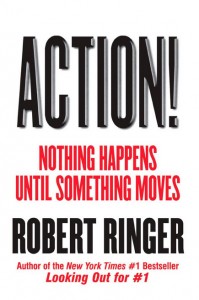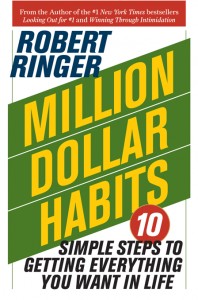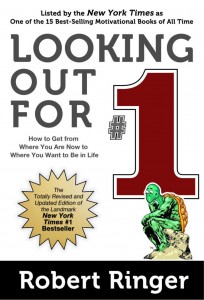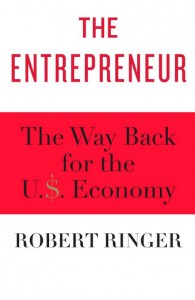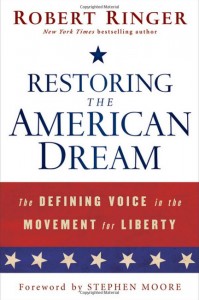Intervening in the Law Of Averages
Posted on January 29, 2015 by Robert Ringer
When I was about twenty years old, I excelled at two things: naiveté and gullibility. It never occurred to me that making money had anything to do with creating value in the marketplace, so it was quite natural for me to gravitate toward gambling.
I loved horse racing, and went through a period where I studied the Daily Racing Form Monthly Chart Book hours on end. Using my trusty Neolithic calculator, I was determined to figure out a mathematical horse-betting system that would yield a guaranteed profit.
LOL? Not so fast. Hard as it may be to believe, I actually succeeded in coming up a system that worked! The problem? It worked only in theory, but not so much in real life. Let me explain.
What I found was that if you bet on favorites that were 2-to-1 or better in every race, and used the age-old doubling-up system, you would, in fact, always make a profit. After about a year of intense study and calculating, I had the proof — at least on paper.
To my dismay, however, what I discovered was that when I tested my system at the race track, real-life factors came into play — factors that skewed my calculations. For one thing, I would sometimes have to wait until the last minute to place my bet, because the favorite wasn’t known until then.
The result was that I often got shut out at the betting windows and wasn’t even able to place a bet. Or, if I was able to, the odds often slipped below 2-to-1 in the waning moments before the betting windows closed, which created havoc with my system.
In other words, the system worked in theory, but not in real life. And the aspect of the system that was most impractical — that at some point after the first day’s race card I would have run out of money — I (thankfully) never had the opportunity to experience. As you can see in the chart below, even though my first bet was only $2, by the first race on the second day (race No. 10), I would have had to bet $1,024 to win a paltry $2.
And if I had gone seventeen races in a row without winning (which any horse player knows is not all that difficult to do), I would have had to bet $262,144 to win $2. This is why the double-up system doesn’t work even when there are no real-life variables — such as in roulette and craps — and why the house always wins. The simple fact is that the house has unlimited money and you don’t.
| Bet No. | Amount Bet ($) |
| 1 | 2 |
| 2 | 4 |
| 3 | 8 |
| 4 | 16 |
| 5 | 32 |
| 6 | 64 |
| 7 | 128 |
| 8 | 256 |
| 9 | 512 |
| DAY 2 | |
| 10 | 1,024 |
| 11 | 2,048 |
| 12 | 4,096 |
| 13 | 8,192 |
| 14 | 16,384 |
| 15 | 32,768 |
| 16 | 65,536 |
| 17 | 131,072 |
| 18 | 262,144 |
The reason I decided to write about this disappointing educational experience is because the law of averages is such an integral part of life. People (including myself) often say, or imply, that if you try enough times, the law of averages assures that you will eventually succeed at whatever it is you’re trying to accomplish.
And it’s true, but with an asterisk. Let’s back up and analyze this phenomenon in more detail. First of all, the Law of Independent Trials states that in games of chance where there are no external influences — such as in craps and roulette — each play is completely random and has nothing to do with any previous plays.
Thus, if you bet on a number in roulette because it has not come up in the previous fifty times that the wheel has spun, the odds of the ball falling into that number’s slot are no better than they were on the first spin.
Most gamblers — especially compulsive gamblers — seem incapable of accepting this probabilities fact of life. It’s as though they believe that roulette wheels and dice have memories and personalities. But to the delight of casino managers, they are wrong.
The problem is that gamblers erroneously use the term “law of averages” when they are really referring to the Law of Large Numbers, a principle of probability which states that, given enough trials or instances, the frequency of events with the same likelihood of occurrences evens out. This error in logic is commonly referred to as “the gambler’s fallacy.”
Take the flip of a coin, for example. If a coin toss comes up heads twenty times in a row, the Law of Independent Trials says that the odds are still only 50-50 that it will come up tails on the twenty-first try. But if you flip the same coin 100,000 times, the Law of Large Numbers says that there is a near 100 percent certainty that it will come up very close to 50,000 heads and 50,000 tails.
But keep in mind that everything I have discussed up to this point involves inorganic matter. Things change, however, when outcomes are dependent upon human traits. Stories abound about people who have repeatedly tried and failed, stubbornly stayed their course, and ended up winning. Abraham Lincoln, Thomas Edison, and Colonel Sanders are oft-used examples that come to mind.
The fact is that when human beings are involved, the odds are not strictly dependent upon statistical probabilities, because factors such as motivation, persistence, creativity, and desire come into play.
Because of this, if someone tries and fails, the odds of succeeding on his next try should actually be better than on the previous try, because, through experience, the person has presumably learned what doesn’t work. The only way his chances will not improve is if he doesn’t learn anything from his experience and continues to repeat the same mistakes.
Of course, if he fails too many times, he can actually be worse off, for a number of reasons: He may become discouraged and negative; he may have trouble getting people whom he needs to support his venture to believe in him and his ideas; or, as a result of his failures, his financial situation may have deteriorated so much that it impedes his ability to do what needs to be done.
What does all this mean to you? Simply that from a pure probabilities standpoint, each time you start over, your odds are no better than they were the last time you tried. Thus, it’s a mistake to think that the law of averages/Law of Large Numbers will come through for you on its own. It won’t, because it’s a static phenomenon — really nothing more than a mathematical tool. It just sits invisibly in the background and operates impassively.
But when you factor in the human element, the brain is capable of overcoming both the Law of Independent Trials and the Law of Large Numbers. More specifically, when you add the greatest of all catalysts — action — to these laws, it is your ability, your judgment, your persistence, and your creativity that determine the odds for or against something happening.
In other words, the human brain has the capacity to intervene in the law of averages (again, really just a layman’s way of unknowingly referring to the Law of Large Numbers), because it’s a law that applies only to situations where there are no external factors at play.
And just think, you and I are part of the only matter on planet Earth whose atoms are arranged in such a way that make all this possible. What a great life. I don’t think I’d trade my organic existence — with free will added in as a bonus! — for any other role in the universe.






